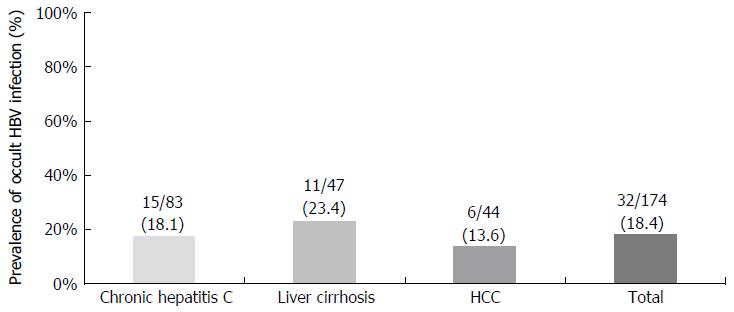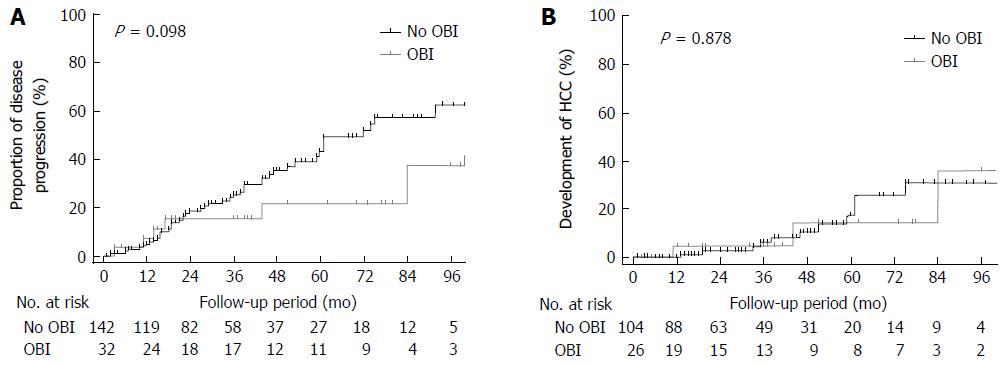Copyright
©The Author(s) 2016.
World J Gastroenterol. Nov 14, 2016; 22(42): 9427-9436
Published online Nov 14, 2016. doi: 10.3748/wjg.v22.i42.9427
Published online Nov 14, 2016. doi: 10.3748/wjg.v22.i42.9427
Figure 1 At study enrollment, the prevalence of occult hepatitis B virus infection in blood of patients with chronic hepatitis C virus infection.
The prevalence of HBV DNA in blood among 174 patients was 32 (18.4%) by nested PCR; 15 of 83 (18.1%) were positive in the chronic hepatitis C group, 11 of 47 (23.4%) in the liver cirrhosis group, and 6 of 44 (13.6%) in the HCC group. The difference was not significant. HCC: Hepatocellular carcinoma.
Figure 2 Effect of occult hepatitis B virus infection positivity on disease progression and hepatocellular carcinoma development.
A: Cumulative incidence of disease progression defined as development of liver cirrhosis or HCC, worsening of Child Pugh class (A→B or C), or mortality according to OBI; B: Cumulative incidence of development of HCC according to OBI. HCC: Hepatocellular carcinoma; OBI: Occult hepatitis B virus infection.
- Citation: Cho J, Lee SS, Choi YS, Jeon Y, Chung JW, Baeg JY, Si WK, Jang ES, Kim JW, Jeong SH. Occult hepatitis B virus infection is not associated with disease progression of chronic hepatitis C virus infection. World J Gastroenterol 2016; 22(42): 9427-9436
- URL: https://www.wjgnet.com/1007-9327/full/v22/i42/9427.htm
- DOI: https://dx.doi.org/10.3748/wjg.v22.i42.9427














